The Future of Performance Cars

When it comes to high-performance machinery, there has been no better time in the history of the automobile. From 1200-horsepower, multi-million-dollar Veyrons to $23,000, 300-horsepower/30-mpg muscle cars, we really do have it all.
MORE AT MOTORTREND.COM
But for how long? Are we at the peak of automotive performance, or just the beginning? We know the future of the automobile will keep getting greener, but where does that leave those who love rev-matched downshifts and the synchronized scream of pistons, cams, valves, and crank at wide-open throttle? We surveyed the industry and asked several key experts to look 10 years into the future of high-performance cars. You'll be surprised at what they told us...
AUDI: WHEN DOES INTERNAL-COMBUSTION DIE?
"I will not be alive any more. And I hope I'm still living some time, but I'm convinced it will still be in existence. It will stay one of the best solutions, and not only for motorsport.'' -Dr. Wolfgang Ullrich, Head of Audi Motorsport
BMW: M5 UPS THE ANTE
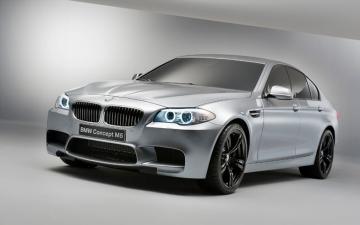
The heart of any BMW M5 is its powerful engine. For the 2012 model, that means the same 4.4-liter twin-turbo V-8 that produces 555 horsepower and 500 pound-feet of torque that's already found in the X5M and X6M. To increase fuel efficiency 25 percent over the V-10 in the 2010 M5, which was rated at a mere 11/17 mpg, the 2012 model will use an automatic start-stop function in combination with a seven-speed dual-clutch transmission. An Active M differential will be employed to split power between the rear wheels, which should improve handling by over-driving the outer wheel in a turn. BMW assures us the M5 has large enough brakes to lap the Nürburgring right from the showroom. When it arrives next year, we will, of course, verify.
DODGE: A FUTURE WE CAN AFFORD
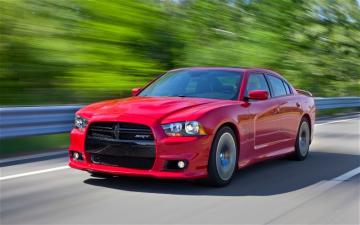
Anytime we've gone through a bit of an oil crisis, technology always bounces back. Everyone probably said the muscle car was dead 30 years ago, but it's actually in full force even stronger. So this year we start with the SRT8, with the first time it's had cylinder deactivation. I keep seeing technologies enabling performance, not being hindered by it. I see that happening... probably more radical swings in the ability to have, let's say, a 400-hp engine that gets 40 mpg as well. We're finding that multispeed transmissions are also a phenomenal thing that's just now starting, almost like the 20-speed bicycle back in the day, that's just now becoming more commonplace. That's a huge advantage -- having an engine that sleeps when it needs to, that performs. On top of that I see Porsche has already started to dabble in this space where you're using hybrid technology as a performance enhancer, not just for fuel economy. So I see the future being all about duality, having your cake and eating it too. Because everyone's going to need that intellectual alibi when they buy their next performance car in 10 years.
What will the SRT8 look like in 2021?
There will still be a handful of V-8s out there, but we're going to invest in fours and sixes. With the SRT, we've had turbo fours in the past. We're looking at active dampening, which we actually have today in the SRT8 Charger. So it's taking all these technologies that people associate with relatively exotic cars, and bringing it down to the Dodge customer, making it much more affordable. -Ralph Gilles, SRT Brand President/CEO; Chrysler Group Product Design Senior Vice President
FORD: WHAT ABOUT THE MUSTANG?
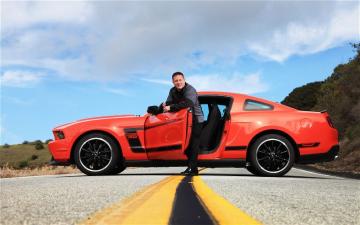
"Innovations in technology, including improvements in aerodynamics, lighter weight materials, and powertrain performance will definitely influence the design and function. The challenge for performance cars going forward is to continue to deliver the 'and' solution that we started with the 2011 Mustang.
Maintaining / improving power and performance while delivering outstanding fuel is a must and will ensure the sustainability of the brand. Mustang will continue to deliver on its promise while paving new ground into the future of high-performance vehicles." -Dave Pericak, Ford Mustang Chief Engineer
GM: A DIFFERENT FORMULA
What will be the key performance-enabling technologies of the next decade?
To the extent that we can boost small-displacement engines, I think it's not just engine technology, because the power-to-weight ratio needs to be good. We have to do things in the industry relative to performance cars to really enable a different formula.
But I also think there are a lot of things yet to come on internal-combustion engines that will be helpful and enable that as well. So it's not over, but it will change, and it will change quite dramatically. The displacement and horsepower piece of that will only get better, in terms of how much we get out of lower displacements, but also it will move to lower displacements, and numbers of cylinders. Because we're going to go after the car -- with a vengeance. -Mark Reuss, General Motors North America President
JAGUAR: TAKING THE NEXT LEAP
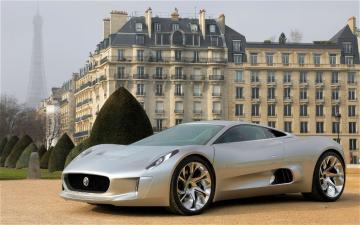
Jaguar takes on the Porsche 918 on the road, if not the track, with its C-X75 hybrid supercar. It's set to take orders this fall, with deliveries beginning in late 2013. The vehicle's name will change, and Jaguar will build just 250 examples at a base price of $1.151 million or more, depending on the market and taxes, based on recent exchange rates.
A 1.6-liter, highly boosted gasoline internal-combustion engine with "not just one simple blower," according to Jaguar-Land Rover engineering director Bob Joyce, combines with two powerful electric motors and four-wheel drive to bring on a sub-3-second 0-60-mph time and sub-6-second 0-100-mph time, plus a top speed of more than 200 mph. All-electric range is up to 31 miles, and Jaguar's estimated CO2 emissions of less than 99 grams per kilometer comes to more than 55.2 mpg.
Will man's thirst for power ever be quenched?
"Where it's going to end up en masse, that's going to take time to find out, but I think it'll be a bit of everything. As far as internal-combustion engines, I think we'll still see V-8s, V-12s, V-6s, whatever they might be. But the jury's out and time will tell... "It's all about efficiency now. If you can get 500, 600, 700 horsepower out of a more efficient engine, then it will happen. When you think that 100 horsepower per liter was once a goal...we're talking 200, 250 horsepower per liter now. That's phenomenal! Man will always want to strive for faster, bigger, better...it's the natural human state." -Ian Callum, Jaguar Design Director
LAMBORGHINI: THE DNA MUST BE RETAINED
What is the key to the future for Lamborghini?
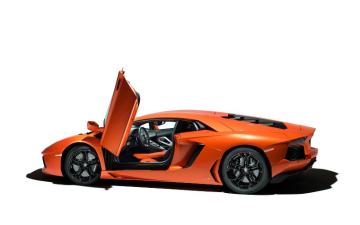
We are pretty sure that carbon fiber will be one of the major players for the structural parts of the next decade. It was forecast that in the next four years the automotive business will be the number-one consumer of carbon fiber, so this is clear. Carbon fiber will be a key for the future to improve safety, to improve the stiffness, and reduce weight.
Turbo or hybrid Lamborghini?
Normally, you talk about turbochargers when you think about downsizing, and downsizing is something that is difficult for a super sports car [manufacturer] like Lamborghini to think about at this moment. I think it is against the heritage of the DNA of the flagship like Aventador. The turbo is something...but at the end, the really sportive car is naturally aspirated. If you are a good engineer, you are able to achieve the best performance without using boost. And for us, the challenge that we have is to be the best. To have the best means to use the best possible, that means the flow efficiency of the intake manifold, of exhaust, reduce the backpressure...everything in the best way. If we talk about [a] hybrid solution, it is the same discussion. We want to use everything in order to achieve our target of reduction of the CO2 of 35 percent compared with 2007. To reach this, you must maintain the DNA. If you put 400 kilograms [880 pounds] of batteries it will be difficult to have a car that can be able to run with handling that we want.
The 2021 Aventador?
If I close my eyes, I want to retain the DNA of Lamborghini, but I want also to be more and more aggressive in the CO2 reduction and fuel consumption. I must think something like this: Cylinder deactivation-we have 12 cylinders, but if I can use in the town three, four, six...if I can have some energy storage, something like this, can be another opportunity. But what is important is to maintain the DNA of Lamborghini. If when I want to open the throttle body, I push the accelerator, I must have 12 cylinders that push me from behind. I must hear the noise. If I don't have this, it is finished emotionally for Lamborghini. And if it's finished emotionally, then there is no sense for Lamborghini to exist. -Maurizio Reggiani, Research and Development Director at Automobili Lamborghini, s.p.a.
MAZDA RX-9: RETURN OF THE ROTARY
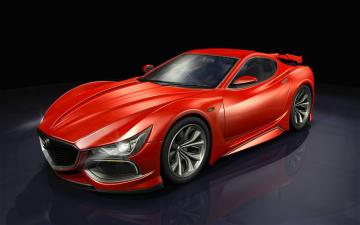
Word from deep inside Mazda's Hiroshima HQ is that development of its much-rumored, rotary-powered RX-9 is well underway. As one source told us, the company has put most of its R&D efforts into its new SkyActiv engines and transmissions and the next-generation MX-5, hampering the RX-9's progress.
"We want to take the RX-9 to the next level, but just can't find the man-hours to do it," says our insider. "We have a guideline. We know what we have to do. But as we must give priority to the next-gen MX-5, we have only a small band of guys working on the RX-9."
Unlike the outgoing RX-8, with its complicated rear-door setup, the RX-9 will be a coupe. This means it will be more of an RX-7 for the 21st century, but with a twist. That twist will reportedly be in the form of hybrid technology Mazda will borrow from Toyota, thanks in part to an agreement the automakers signed last year. Apparently Mazda will only use Toyota's hybrid drive unit, with the main power coming from the Mazda-built rotary. The hybrid unit will reportedly be used primarily as a power booster and range extender. Our confidant tells us there is no point in doing with a rotary what a current gasoline engine can do, hence the move to a hybrid-assisted setup.
"Smaller, lighter, cleaner, more fuel-efficient, and more fun to drive. That's where we want to take the next rotary car," says our source, who hinted at a late 2013 debut. Given the bad rap the RX-8 suffered -- fuel-guzzler, oil-guzzler, weak mid-range torque -- such a radical rotary rebirth is the only way to take Mazda's greatest legacy forward.
MCLAREN: PUSHING THE PERFORMANCE ENVELOPE
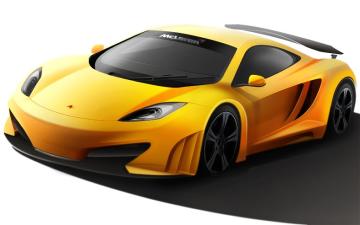

 Yahoo Autos
Yahoo Autos 
